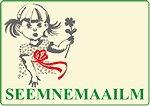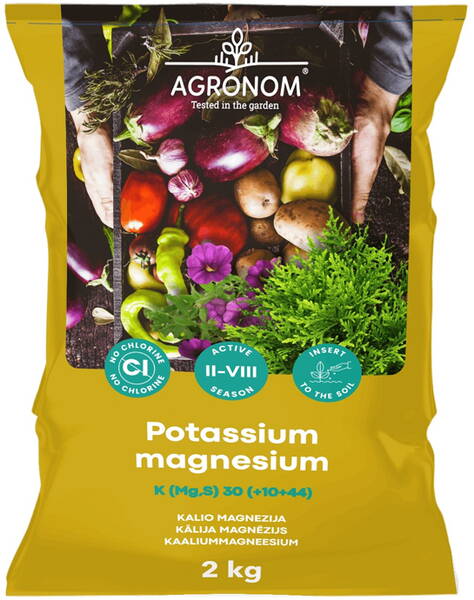Produced from natural materials - schenite and langbeinite-cainite rock.
Suitable for fertilizing tomatoes, cucumbers, potatoes, strawberries, raspberries, blueberries, perennial flowers, annual flowers, garden crops, field crops, fruit trees, grass, roses, coniferous trees and any other outdoor and greenhouse plants. Potassium-magnesium fertilizer is a potassium fertilizer with a high content of magnesium and sulfur. Nutrients are contained in the fertilizer in the form of sulfates and are soluble in water, and therefore immediately available to plants.
Vegetable and fruit crops suffer less disease and tolerate cold weather better. The use of potassium magnesium increases productivity by 30-40%. The effect of using potassium magnesia is especially noticeable on poor soils. And this is not only an increase in productivity, but also abundant flowering of ornamental crops, full-sized bunches of grapes and juicy green needles of coniferous crops.
Nutrient content in mass percentage:
water soluble potassium oxide (K2O) 30%
water-soluble magnesium oxide (MgO) 10%
water-soluble sulfur trioxide (SO3) 44%.
Application.
Apply from early spring to late summer (March to August) 2-3 times during the growing season. Distribute the fertilizer evenly and mix with the soil. After fertilizing, it is recommended to water the plants.
For tomatoes, potassium-magnesium fertilizer is used 2-3 times, during flowering and at the beginning of fruit ripening. Potassium-magnesium fertilizer helps prevent tomato flowers from falling off and promotes uniform ripening of fruits. The vine is fertilized to ripen (wooden) the shoots starting in August. 1-2 times.
Application rate.
In the greenhouse - tomatoes, cucumbers, paprika, grapevine and all other plants 30-40 g/m2 or 30 g per plant.
Vegetables in open ground: cabbage, potatoes, lettuce, onions, beans and all other crops 80-100 g/m2 or 80 g per plant.
Berry crops: strawberries, raspberries, blueberries, currants, sea buckthorn, chokeberry and all other crops 30-40 g/m2 or 30 g per plant.
Apple trees and stone fruit trees (especially cherries) 40-60 g/m2 or 50 g per plant.
Lawns: 25-35 g/m2.
Plants suffering from potassium deficiency 80-100 g/m2 or 80 g per plant.
Norm when mixing into peat soil: 1.3-1.8 kg/m3. 20-25 g = about half a handful, 40 g = about a handful.
The product is suitable for use in organic agriculture and complies with EU Commission Regulation.
Store in a cool, dry place (<30°C).
Potassium magnesium sulfate does not contain chlorine, so it does not salinize the soil and is suitable for feeding chlorophobic plants, including conifers.
And although it does not completely replace potassium sulfate and potassium nitrate, it complements them well, compensating for the basic need of plants for potassium with small financial investments.
On light soils, potassium magnesium sulfate is applied in the spring when preparing the soil for planting, on heavy soils - in the fall during digging or in grooves in tree trunks.
In summer, it is more rational to apply the fertilizer as foliar feeding in accordance with the requirements of agricultural technology for individual crops.
Potassium magnesium sulfate is well suited for foliar feeding, it dissolves easily in water, leaving very little sediment.
Potassium magnesium sulfate is applied both in dry and dissolved form. Dry fertilizer is embedded in the soil in the near-trunk grooves to a depth of 6-20 cm, followed by watering.
In summer, foliar feeding is used with a small drop until the leaf is wet. For this, a solution is made at the rate of 1 tablespoon per 10 liters of water.
For foliar feeding, a solution is made of 10-20 g (2-4 teaspoons) of fertilizer per 10 liters of water. Let it brew for 1 hour, then drain from the sediment and spray the plants in the morning or evening hours until the leaves are wet.
Potassium magnesium sulfate is not compatible for mixing with other fertilizers, growth stimulants and pesticides (however, when applying fertilizer in the fall, wood ash or dolomite flour can be used at the same time).












